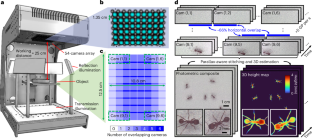2023-03-20 ノースカロライナ州立大学(NCState)
しかしながら、染色された混合織物やシワ防止のための化学物質で処理された織物は、プロセスに多くの手順が必要であった。
<関連情報>
- https://news.ncsu.edu/2023/03/researchers-separate-cotton-from-polyester-in-blended-fabric/
- https://www.sciencedirect.com/science/article/pii/S2666916123000117
持続可能な廃棄物処理のための酵素的繊維分離法 Enzymatic textile fiber separation for sustainable waste processing
Jeannie Egan, Siyan Wang, Jialong Shen, Oliver Baars, Geoffrey Moxley, Sonja Salmon
Resources, Environment and Sustainability Available online 8 March 2023
DOI:https://doi.org/10.1016/j.resenv.2023.100118

Highlights
- •Enzymatic degradation of cotton produces separable slurries of micron-sized particles.
- •Agitation plays a critical role in enhancing mechano-enzymatic solid size reduction.
- •Chemical pretreatment overcomes hydrolysis obstacles of reactive dyes and finishes.
- •Glucose quantification by HPLC validated gravimetric weight loss measurements.
- •Converting disposed textiles to pumpable slurries holds promise for waste diversion.
Abstract
According to the US Environmental Protection Agency, around 11 million tons of post-consumer textile waste (PCTW) are disposed in U.S. landfills annually, which is 8% of all municipal solid waste. PCTW is landfilled because it contains complex blends of natural and synthetic fibers that are not easy to separate, and dyes and finishing chemicals on the fabrics interfere with recycling. The goal of this work was to develop a laboratory scale process for deconstructing and separating cut fabrics into different fiber fractions to create purified product streams that could promote textile recycling. Method parameters were selected from preliminary tests on various fabric types, followed by parametric evaluation with a set of rationally prepared model textile wastes. The combination of aggressive mechanical agitation together with cellulase catalyzed hydrolysis caused 100% cotton fabrics to disintegrate completely into a slurry of < 2 mm small solids and water soluble degradation products. The presence of reactive dyes on the model fabrics inhibited degradation, with the bifunctional reactive dye creating larger barriers to degradation than the monofunctional dye. Dye induced barriers were overcome with sufficient time, enzyme amount, and repeated treatment. Even though its collateral impact was a decrease in initial fabric burst strength, the presence of durable press (DP) finish on cotton presented a large obstacle to enzymatic degradation. This was overcome by including acid/alkali pretreatments to DP fabric before applying enzyme. The presence of polyester fiber in a cotton/polyester blend caused the fabric to retain its macroscopic knitted structure, while enzymatically degraded cotton was removed by washing and filtration to yield clean polyester. In all cases, fabric degradation products were separated by filtration into – depending on the severity of the treatments – residual large solids and small solids fractions and a clarified process liquid that contained soluble components. These three fractions were quantified gravimetrically and were characterized using high-performance liquid chromatography (HPLC), x-ray diffraction (XRD), differential scanning calorimetry (DSC), Fourier-transform infrared spectroscopy (FTIR), viscometry, scanning electron microscopy (SEM) and optical microscopy. The small solids present in the slurries after cotton degradation could be valuable as additives for paper, composites and other products, while the glucose-rich process syrups could be used to produce fuels and chemicals by fermentation, all of which would help divert PCTW from landfills. Importantly, even when cellulosic textile components were not fully degraded to soluble compounds, their conversion to pumpable slurries enabled easy handling of the degraded material and allowed recovery of non-degraded synthetic fibers by simple filtration and washing.



